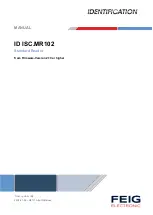
Chapter 3
Hardware Overview
3-6
ni.com
Analog Output
The NI 6052E supplies two channels of AO voltage at the I/O connector.
The reference and range for the AO circuitry is software configurable.
The reference can be either internal or external, and the range can be either
bipolar or unipolar.
Analog Output Reference Selection
You can connect each DAC to an internal reference of 10 V or to the
external reference signal connected to the EXTREF pin on the I/O
connector. The signal applied to EXTREF should be within ±11 V.
You do not need to configure both channels to use the same reference.
Analog Output Polarity Selection
You can configure each AO channel for either unipolar or bipolar output.
A unipolar configuration has a range of 0 to V
ref
at the analog output.
A bipolar configuration has a range of –V
ref
to +V
ref
at the analog output.
V
ref
is the voltage reference used by the DACs in the AO circuitry and can
be either the +10 V onboard reference or an externally supplied reference
within ±11 V. You do not need to configure both channels for the same
range.
Selecting a bipolar range for a particular DAC means that any data
written to that DAC are interpreted in two’s-complement mode. In
two’s-complement mode, data written to the AO channel can be positive or
negative. If you select unipolar range, data values are interpreted in straight
binary mode. In straight binary mode, data written to the AO channel range
must be positive.
Analog Output Reglitch
In normal operation, a DAC output glitches when it is updated with a new
value. The glitch energy differs from code to code and appears as distortion
in the frequency spectrum. Each analog output contains a reglitch circuit
that generates uniform glitch energy at every code rather than large glitches
at major code transitions. This uniform glitch energy appears as a multiple
of the update rate in the frequency spectrum. This reglitch circuit does
not
eliminate the glitches; it only makes them more uniform in size.
















































